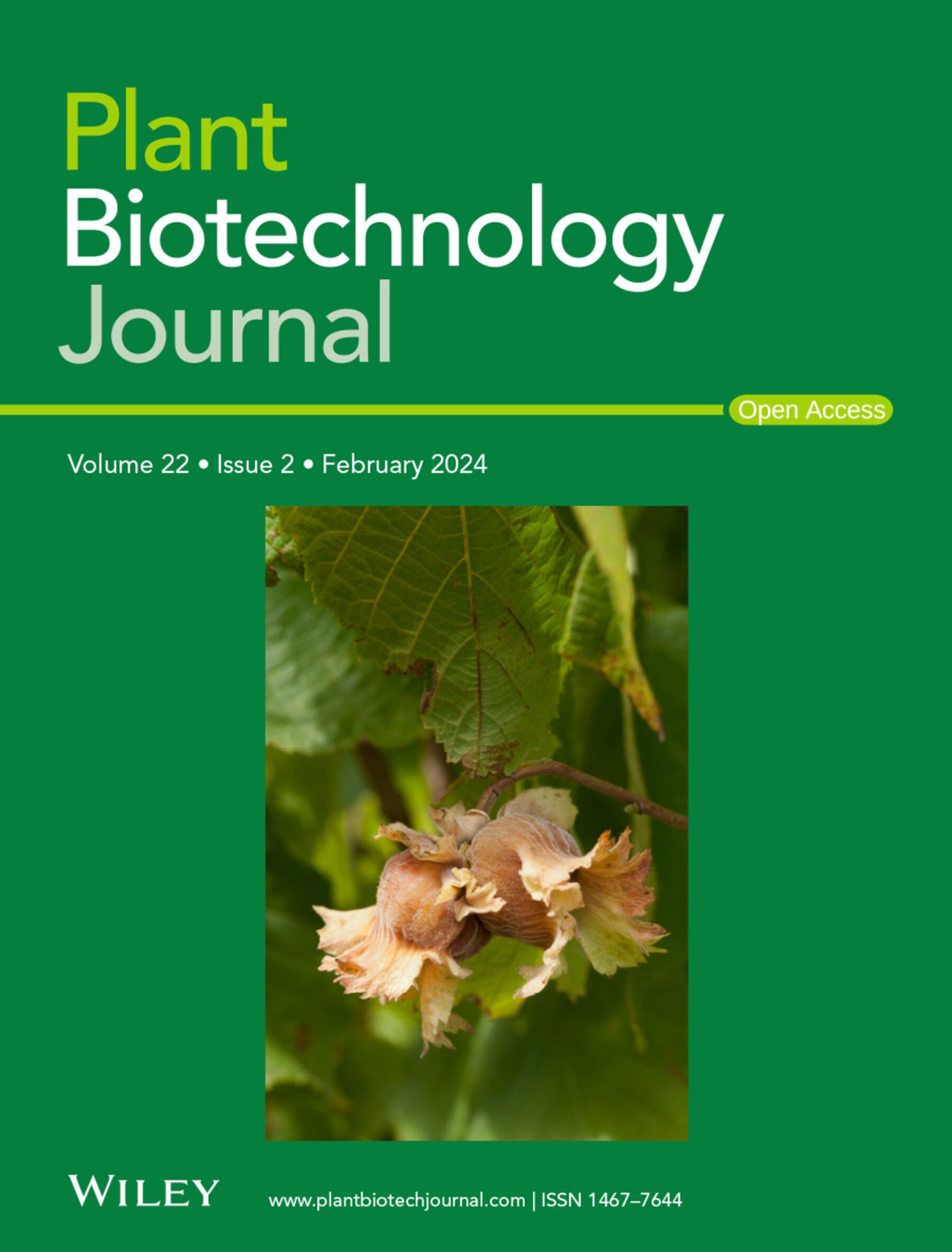ERF.D2 negatively controls drought tolerance through synergistic regulation of abscisic acid and jasmonic acid in tomato
IF 10.1
1区 生物学
Q1 BIOTECHNOLOGY & APPLIED MICROBIOLOGY
引用次数: 0
Abstract
SummaryPlants inevitably encounter a diverse array of constantly changing environmental stresses, and drought stands out as one of the most severe threats to plants. Abscisic acid (ABA) and jasmonic acid (JA) work synergistically to increase plant drought tolerance, but their interplay during drought response remains elusive. Here, we uncovered that ABA induced the degradation of a negative transcription regulator, ethylene responsive factor (ERF.D2), in tomato drought tolerance. We identified that ERF.D2 was phosphorylated at Ser‐52 by calcium‐dependent protein kinase 27 (CPK27) in an ABA‐dependent manner and underwent subsequent PUB22‐mediated ubiquitination. Degradation of ERF.D2 leads to the increase of the transcript levels of JA biosynthesis genes,小块土地。D2通过协同调控脱落酸和茉莉酸对番茄抗旱性产生负调控作用
植物不可避免地会遇到各种不断变化的环境压力,干旱是对植物最严重的威胁之一。脱落酸(ABA)和茉莉酸(JA)协同作用提高植物的抗旱性,但它们在干旱响应中的相互作用尚不清楚。在这里,我们发现ABA诱导了负转录调控因子乙烯响应因子(ERF.D2)在番茄抗旱性中的降解。我们确定了ERF。D2在Ser - 52位点被钙依赖蛋白激酶27 (CPK27)以ABA依赖的方式磷酸化,并随后经历PUB22介导的泛素化。ERF的退化。D2导致JA生物合成基因、烯氧化物环化酶(AOC)和12‐氧植物二烯酸还原酶3 (OPR3)的转录水平和内源JA浓度的增加,从而增强番茄植株的抗旱性。这些发现为番茄抗旱过程中ABA-JA协同作用的分子机制提供了新的见解。
本文章由计算机程序翻译,如有差异,请以英文原文为准。
求助全文
约1分钟内获得全文
求助全文
来源期刊

Plant Biotechnology Journal
生物-生物工程与应用微生物
CiteScore
20.50
自引率
2.90%
发文量
201
审稿时长
1 months
期刊介绍:
Plant Biotechnology Journal aspires to publish original research and insightful reviews of high impact, authored by prominent researchers in applied plant science. The journal places a special emphasis on molecular plant sciences and their practical applications through plant biotechnology. Our goal is to establish a platform for showcasing significant advances in the field, encompassing curiosity-driven studies with potential applications, strategic research in plant biotechnology, scientific analysis of crucial issues for the beneficial utilization of plant sciences, and assessments of the performance of plant biotechnology products in practical applications.
 求助内容:
求助内容: 应助结果提醒方式:
应助结果提醒方式:


